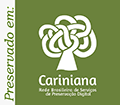Português
DOI:
https://doi.org/10.5281/zenodo.15723569Keywords:
Cerrado, sustentabilidade, iniciação científicaAbstract
This study investigated the development of sustainable paper from dried leaves of plants native to the Brazilian Cerrado, specifically Caryocar brasiliense (pequi) and Anacardium humile (caju-do-cerrado). The Cerrado, a region of great biodiversity and ecological importance, is a target of environmental degradation, making the project relevant for environmental awareness and the exploration of local natural resources. The methodology involved the extraction of cellulose from the dried leaves of these plants to produce recycled paper, promoting the integration of environmental education pedagogical practices in a high school in Goiás. Students collected, processed and used the leaves to extract cellulose, which was later mixed with recycled paper to develop new sheets of paper. The results showed that the cellulose yield of the dried leaves was lower compared to eucalyptus, a plant most used in the paper industry. However, the project highlighted the importance of valuing the biodiversity of the Cerrado and exploring sustainable alternatives. The students' participation in science fairs and the use of digital platforms to share their results contributed to their engagement with environmental issues and to strengthening youth leadership. The work reinforced the importance of environmental education to raise awareness about the conservation of Brazilian biomes, in addition to encouraging the development of sustainable products in the school environment.
Downloads
Published
How to Cite
Issue
Section
License
Copyright (c) 2025 Gabrielle Rosa Silva

This work is licensed under a Creative Commons Attribution 4.0 International License.
Direitos Autorais
Autores mantém os direitos autorais e concedem à revista o direito de primeira publicação, com o trabalho simultaneamente licenciado sob a licença Creative Commons CC-BY 4.0 que permite o compartilhamento do trabalho com reconhecimento da autoria e publicação inicial nesta revista.
O conteúdo relatado e as opiniões emitidas nos textos publicados nesta revista são de exclusiva responsabilidade dos autores.



